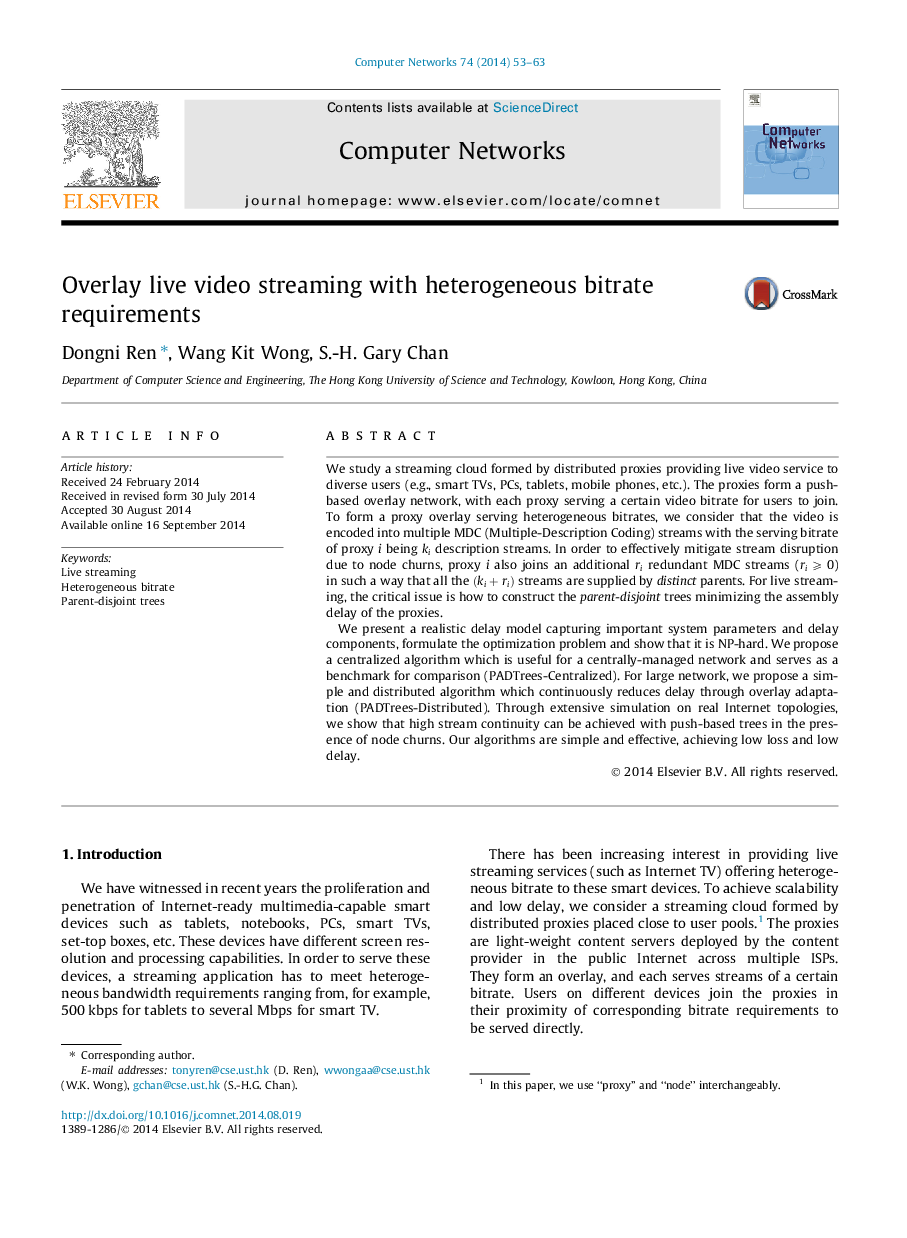| Article ID | Journal | Published Year | Pages | File Type |
|---|---|---|---|---|
| 451858 | Computer Networks | 2014 | 11 Pages |
We study a streaming cloud formed by distributed proxies providing live video service to diverse users (e.g., smart TVs, PCs, tablets, mobile phones, etc.). The proxies form a push-based overlay network, with each proxy serving a certain video bitrate for users to join. To form a proxy overlay serving heterogeneous bitrates, we consider that the video is encoded into multiple MDC (Multiple-Description Coding) streams with the serving bitrate of proxy i being kiki description streams. In order to effectively mitigate stream disruption due to node churns, proxy i also joins an additional riri redundant MDC streams (ri⩾0ri⩾0) in such a way that all the (ki+ri)(ki+ri) streams are supplied by distinct parents. For live streaming, the critical issue is how to construct the parent-disjoint trees minimizing the assembly delay of the proxies.We present a realistic delay model capturing important system parameters and delay components, formulate the optimization problem and show that it is NP-hard. We propose a centralized algorithm which is useful for a centrally-managed network and serves as a benchmark for comparison (PADTrees-Centralized). For large network, we propose a simple and distributed algorithm which continuously reduces delay through overlay adaptation (PADTrees-Distributed). Through extensive simulation on real Internet topologies, we show that high stream continuity can be achieved with push-based trees in the presence of node churns. Our algorithms are simple and effective, achieving low loss and low delay.
